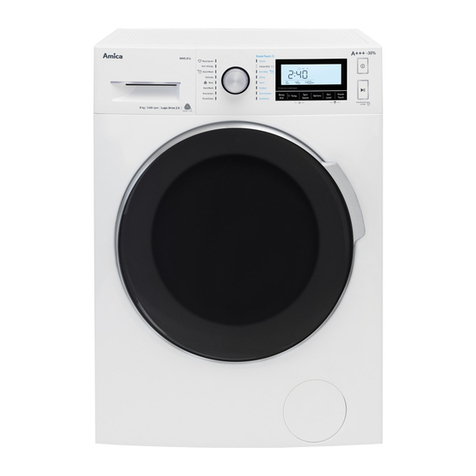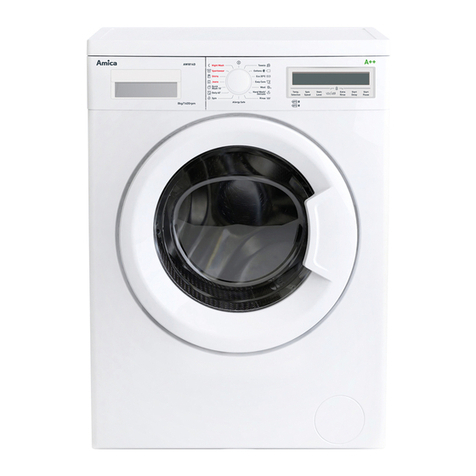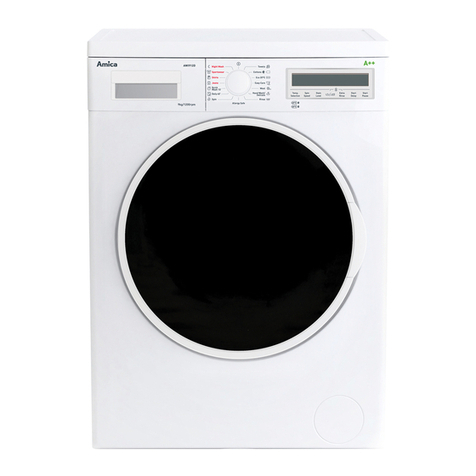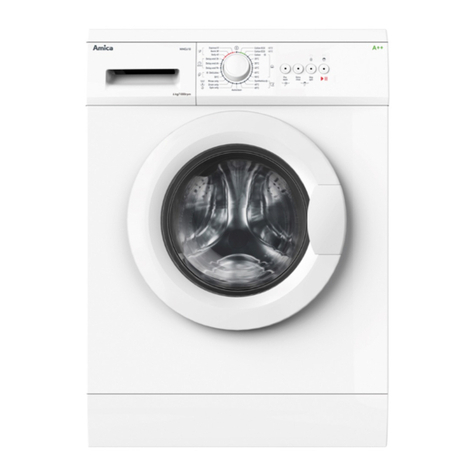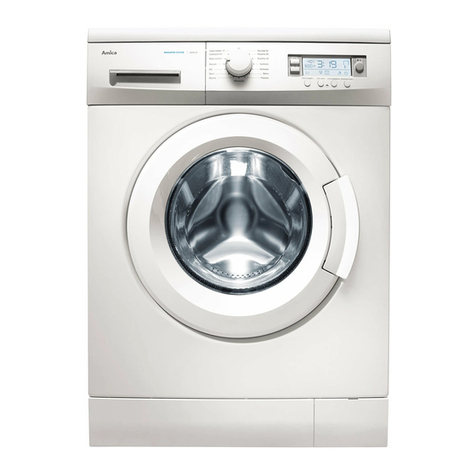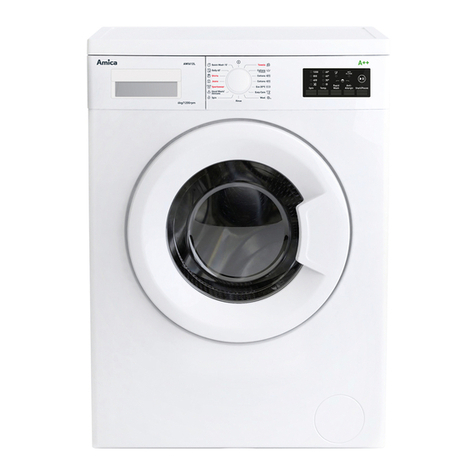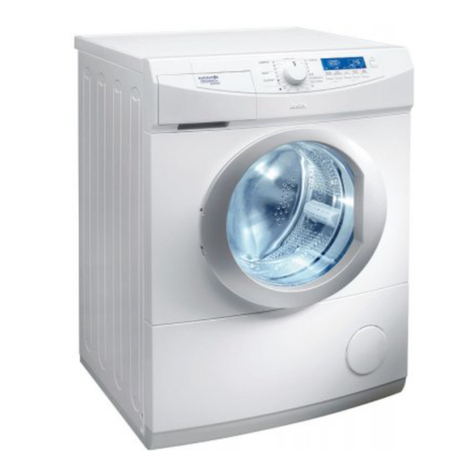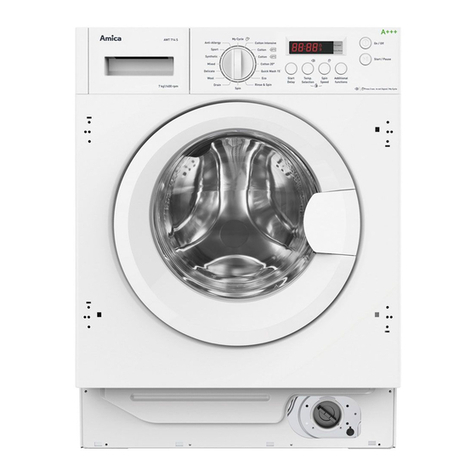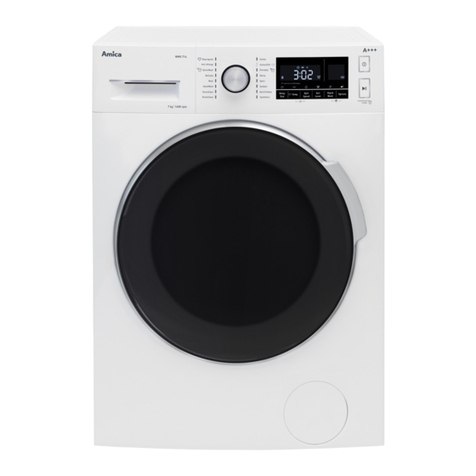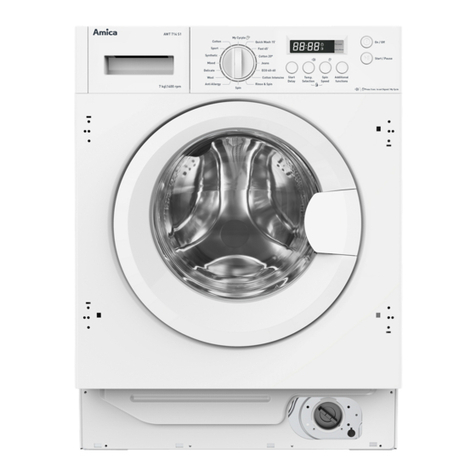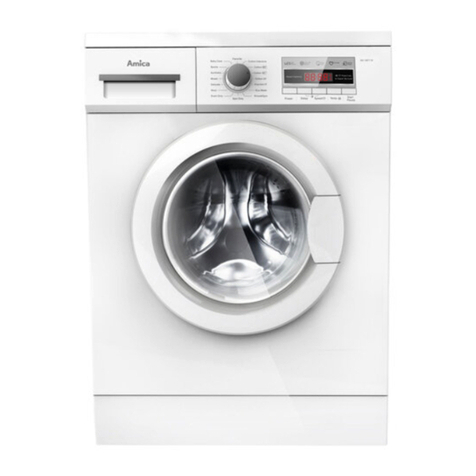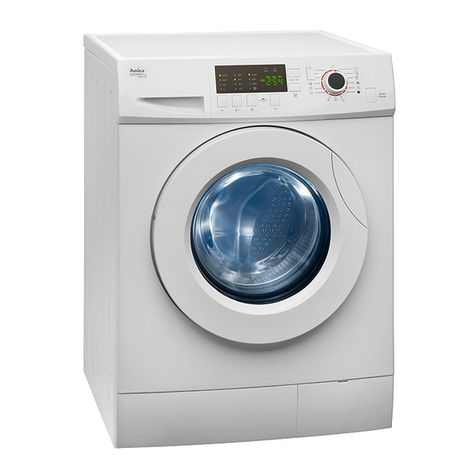
5
Checking stability
Once the washing machine is in position and levelled, it must be checked to ensure it rests
rmly on all four legs.
In order to check this, press down each corner of the appliance in turn to see if it moves.
Safe, long-term and reliable operation of the washing machine depends on it being correctly
positioned and level.
Important! Level the appliance, remove the drum locking bolts and wait 3 hours
before using the appliance for the rst time.
Important! Incorrect levelling, especially instability, may cause the washing machine
to move around during operation.
This appliance can be used by children aged 8 years and
older or by persons with physical, mental or sensory handi-
caps, or by those who are inexperienced or unfamiliar with
the appliance, provided they are supervised or have been
instructed how to safely use the appliance and are familiar
with risks associated with the use of the appliance.
Ensure that children do not play with the appliance.
Cleaning and maintenance of the appliance should not be
performed by children unless they are 8 years or older and
are supervised by a competent person.
NOTES ON SAFETY
DISPOSAL OF THE APPLIANCE
To ensure safety, the washing machine must be rendered unsuitable for use once its useful
life comes to an end. First unplug it and then cut off the power lead. Scrap the appliance in
line with local waste disposal legislation.
This appliance is not intended for use by persons (including children) with physical, mental
or sensory handicaps, or by persons inexperienced or unfamiliar with the appliance, unless
under supervision or in accordance with the instructions as communicated to them by persons
responsible for their safety.
Children shall not play with the appliance.
